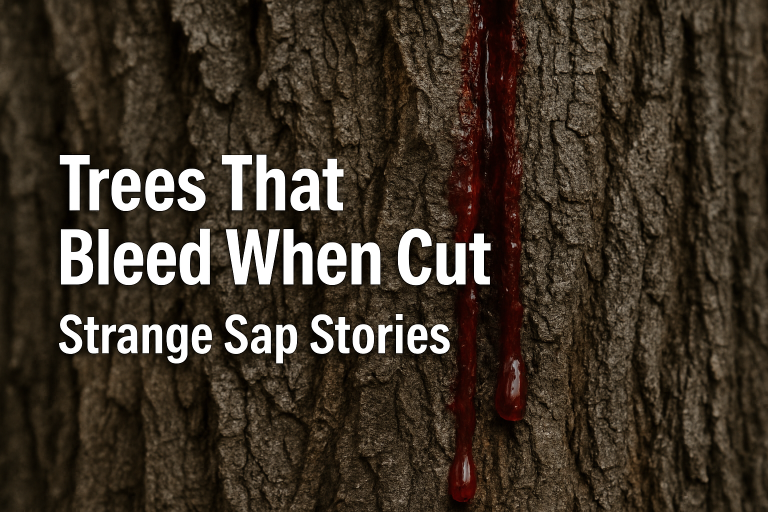On August 6, 1945, the atomic bomb dropped on Hiroshima reduced the city to ashes. Temperatures at ground zero reached 4,000°C (7,232°F), instantly killing nearly 80,000 people and incinerating nearly every living thing within a 1.6 km (1 mile) radius. Yet, against all odds, a handful of plants survived—and even regrew from scorched roots just weeks after the blast.
Among them, one species became legendary: the Hibaku jumoku (“survivor tree”), particularly the Gingko biloba and Camellia trees that still stand today. Their incredible resistance to radiation and fire has made them global symbols of hope—and subjects of intense scientific study.
This article uncovers the science behind Hiroshima’s unkillable flora, their role in post-war recovery, and what they teach us about nuclear resistance, climate resilience, and the future of agriculture.
The Survivor Trees of Hiroshima
1. The Gingko Biloba: A Living Fossil That Outlived the Bomb
-
Location: Just 1.1 km (0.7 miles) from ground zero.
-
What Happened: The blast charred its trunk and vaporized its leaves, but its roots survived underground.
-
The Comeback: By spring 1946, new shoots emerged. Today, it still stands at Hosen-ji Temple.
2. The Camellia Tree: Blooming Through the Apocalypse
-
Location: Shukkeien Garden, 700 meters (0.4 miles) from the hypocenter.
-
What Happened: The trunk was split open by the blast wave, yet it flowered the next spring.
-
Legacy: Its seeds have been distributed worldwide as “peace trees.”
3. The Persimmon Tree: Defying Radiation
-
Location: 1.3 km (0.8 miles) from the blast.
-
What Happened: It was uprooted and burned, but a new sprout grew from its roots.
-
Scientific Significance: Its fruit showed no genetic mutations, baffling researchers.
How Did These Plants Survive?
1. Deep Root Systems
-
Unlike humans, plants store energy underground. The Gingko’s 10-foot-deep roots were shielded from heat.
2. Radiation Resistance
-
Some plants, like sunflowers, absorb and neutralize radioactive isotopes (used in Fukushima cleanup).
-
Gingkos have extra DNA repair enzymes, preventing mutations.
3. Fire Adaptations
-
Camellias have thick, fire-resistant bark.
-
Persimmons can resprout from even 5% of remaining root tissue.
Scientific Discoveries From Hiroshima’s Flora
1. The “Hibaku Seeds” Project
-
Since 2008, seeds from survivor trees have been sent globally to study radiation resistance.
-
Findings: Some descendants grow 20% faster than normal plants.
2. Nuclear Botany: A New Field
-
Researchers now study Chernobyl’s and Fukushima’s flora to compare survival strategies.
-
Discovery: Certain fungi feed on radiation, potentially helping decontaminate soil.
3. Space Farming Implications
-
NASA studies radiation-resistant plants for Mars colonies.
-
Gingko biloba is a top candidate due to its DNA stability.
Where Are These Trees Now?
1. Hiroshima’s Living Monuments
-
Over 170 Hibaku jumoku still grow in the city.
-
Each is mapped and protected by the Hiroshima government.
2. Global “Peace Trees”
-
Gingko saplings from Hiroshima grow at:
-
9/11 Memorial (New York)
-
Imperial Palace (Tokyo)
-
UN Office in Geneva
-
3. The Persimmon’s Legacy
-
Its seeds were planted across Japan as symbols of resilience.
Could These Plants Survive Another Nuclear War?
1. Modern Threats vs. 1945 Conditions
-
Today’s hydrogen bombs are 1,000x stronger—would roots still survive?
-
Answer: Unknown, but deep-rooted perennials (like Gingkos) are the best bet.
2. Climate Change Parallels
-
These plants also tolerate drought, pollution, and extreme heat—key traits for future crops.
3. Bioengineering Unkillable Crops
-
Scientists are splicing Hibaku DNA into wheat and rice for apocalypse-resistant food.
How to Grow Your Own “Survivor Plant”
Best Radiation-Resistant Species for Home Gardens
✔ Gingko biloba – Thrives in urban pollution, lives 1,000+ years.
✔ Sunflowers – Used in Chernobyl/Fukushima cleanup.
✔ Aspen trees – Regrow from roots after fires.
Care Tips
-
Plant in deep soil (encourages resilient roots).
-
Avoid over-pruning (let them develop natural defenses).
-
Use mycorrhizal fungi (boosts nutrient absorption).
Conclusion: Nature’s Ultimate Survivors
Hiroshima’s survivor trees prove that life always finds a way. Their lessons are shaping disaster recovery, space colonization, and the future of farming.
When you see a Gingko tree, remember: its ancestors witnessed an atomic blast—and lived to tell the tale.




Leave a Comment